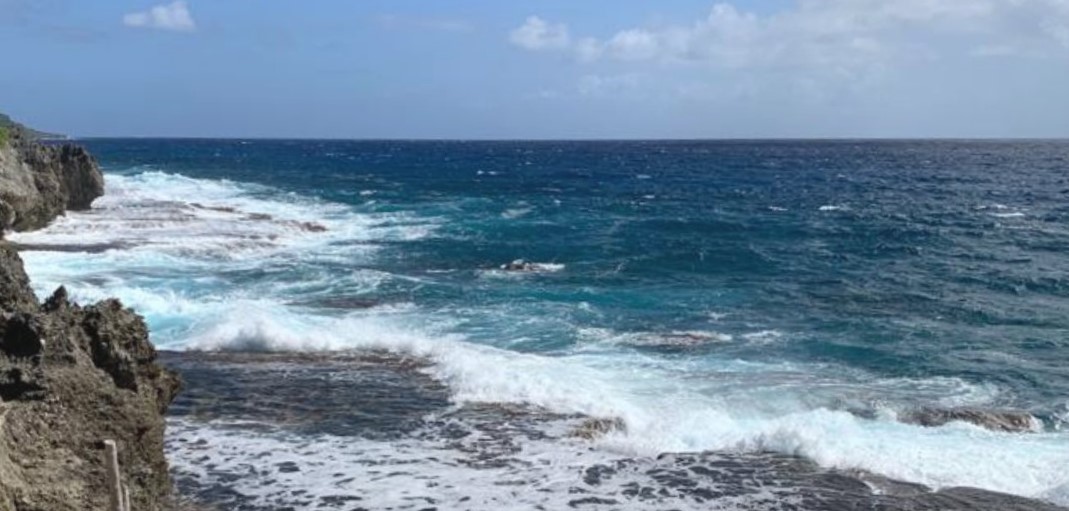
Brief summary
In August 2021, the Office of the Attorney General (OAG) filed a complaint against against Korea Electric Power Company (KEPCO-LG) and Samsung E&C America alleging they were responsible for the environmental damage to Sasayan Valley. In its complaint, the OAG has asked the court to award actual damages and punitive damages for damaging Guam’s natural resources and creating a public nuisance.
This is the first action of its kind taken in recent history by the OAG.
The complaint alleges the defendants knew the Project site was located, and remains, within the groundwater recharge area of Guam’s aquifer and watershed area that supplies 80% of the island’s drinking water. Permits issued by the Department of Public Works (DPW) and Guam Environmental Protection Agency (GEPA) required the defendants to submit an approved Erosion and Sediment Control Plan (E&SC Plan) which contained erosion control measures, including the construction of five ponding basins and the implementation of other measures, before starting earthwork activities.
In July 2021, GEPA responded to a complaint alleging the discharge of runoff from the Project site. GEPA representatives observed that, despite earthwork activities being well underway, the defendants had failed to fully implement the erosion control measures they agreed to take under the E&SC Plan. As a result of defendants’ failures, the OAG alleges there was significant discharge of runoff and sediment from the Project site onto adjoining properties, including a freshwater cave, as well as into the ocean.
The OAG also alleges that the Defendants knew about the dangers of flooding created by their failure to implement proper soil and erosion control measures and damages weeks prior to July 22, 2021 when disturbed historic sites and objects during construction were discovered, including ancestral remains.
In its proposed Second Amended Complaint, the OAG states that archeological studies indicate that Sasayan Valley was the site of a CHamoru settlement for hundreds of years from 1000 to 1700 AD. The OAG alleges that the Defendants knew about their responsibility to implement an approved Erosion and Sediment Control Plan; knew of their responsibility to protect and preserve historic sites and objects pursuant to the Archaeological Monitoring and Discovery Plan; and knowingly and intentionally elected to proceed with construction without implementing appropriate Erosion and Sediment Control Plan or following the Archaeological Monitoring and Discovery Plan.
Deputy Attorney General Fred Nishihira, Assistant Attorneys General Janice Camacho, Joseph Perez, Yusuke Haffeman-Udagawa, and Legal Clerk Brittany Toves are handling this matter on behalf of the OAG.
Case Documents
| Document Title | Date |
| OAG Complaint | August 5, 2021 |
| OAG Amended Complaint | August 30, 2021 |
| Samsung Answer to Amended Complaint | January 4, 2022 |
| KEPCO Answer to Amended Complaint | January 6, 2022 |
| OAG Motion for Leave to Amend Complaint | January 20, 2022 |
| Samsung Opposition to Motion for Leave to Amend Complaint | February 17, 2022 |
| Samsung Motion for Judgment on the Pleadings | February 17, 2022 |
| Decl. of Samsung Counsel re: Motion for Judgment on the Pleadings | February 17, 2022 |
| KEPCO joinder in Opposition to Motion for Leave to Amend Complaint | February 17, 2022 |
| Decl. of KEPCO Counsel in Support of Opposition to Motion for Leave | February 17, 2022 |
| KEPCO joinder in Motion for Judgment on the Pleadings | February 18, 2022 |
| OAG Reply in Support of Motion for Leave to Amend | March 4, 2022 |
| OAG Opposition to Motion for Judgment on the Pleadings | March 18, 2022 |